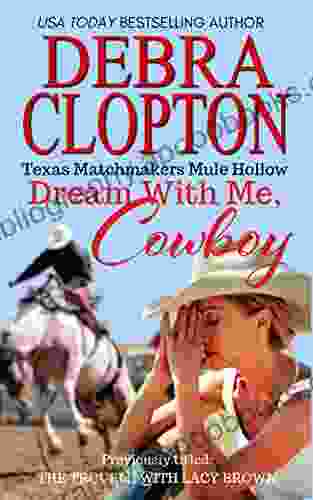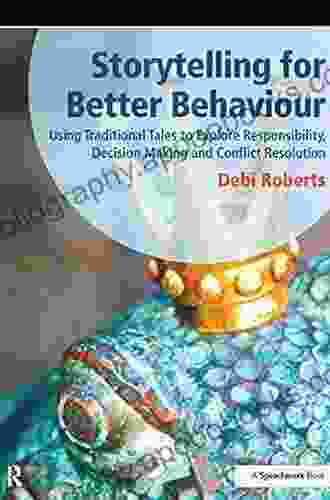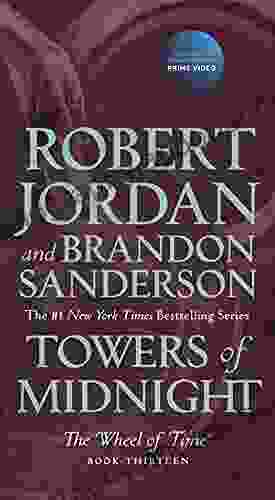Unveiling the Transformative Power of Storytelling: How to Cultivate Positive Behaviour and Foster a Thriving Environment

Since time immemorial, stories have captivated the human imagination, weaving their way through cultures and across generations. From ancient myths to modern-day tales, storytelling has proven to be an enduring force that shapes our beliefs, values, and actions. Its transformative power extends far beyond mere entertainment, reaching into the realm of human behaviour and the creation of thriving environments.
Imagine a world where every interaction is infused with the magic of storytelling. A classroom where students are transported to distant lands through captivating tales that spark their curiosity and fuel their imaginations. A workplace where colleagues connect on a deeper level through shared narratives that foster empathy and collaboration. A community where stories of resilience and triumph inspire individuals to overcome adversity and strive for greatness.
In this article, we will delve into the profound impact storytelling holds in shaping behaviour and cultivating a thriving environment. We will explore the art of effective storytelling techniques and their remarkable ability to inspire positive change. Whether you are a parent, teacher, leader, or community member, you will discover how to harness the power of narratives to transform the lives of those around you.
4.5 out of 5
| Language | : | English |
| File size | : | 11705 KB |
| Text-to-Speech | : | Enabled |
| Screen Reader | : | Supported |
| Enhanced typesetting | : | Enabled |
| Word Wise | : | Enabled |
| Print length | : | 259 pages |
Recent scientific research has shed light on the neurological and psychological mechanisms underlying storytelling's transformative power. When we engage in storytelling, our brains release a cocktail of neurochemicals, including dopamine, oxytocin, and serotonin. These neurochemicals promote feelings of pleasure, connection, and well-being.
Dopamine, known as the "reward chemical," is released when we experience something novel or engaging. Storytelling, by its very nature, captures our attention and stimulates our curiosity, triggering the release of dopamine. This neurological response creates a positive feedback loop that encourages us to seek out and engage with stories.
Oxytocin, often referred to as the "love hormone," is released when we feel connected to others. Storytelling has the unique ability to foster empathy and understanding by allowing us to step into the shoes of different characters and experience their emotions. As we listen to or tell stories, oxytocin levels rise, promoting a sense of closeness and affiliation with others.
Serotonin, associated with mood regulation and well-being, is also released during storytelling experiences. Engaging with narratives that resonate with our values and beliefs can boost our self-esteem and provide a sense of purpose.
The combined effect of these neurochemicals creates a fertile ground for positive behaviour change. When we are feeling rewarded, connected, and fulfilled, we are more likely to engage in prosocial behaviours, such as kindness, cooperation, and empathy.
Effective storytelling for positive behaviour change is not merely about telling a good story. It involves carefully crafting narratives that resonate with the audience, inspire empathy, and motivate action. Here are some key principles to consider:
1. Authenticity and Personal Connection: The most impactful stories are those that come from the heart. Share personal experiences, anecdotes, or examples that illustrate the desired behaviour in a relatable way. When the audience feels a personal connection to the story, they are more likely to internalize the message.
2. The Power of Metaphor and Symbolism: Use metaphors, similes, and symbols to create vivid imagery and evoke emotions. Abstract concepts can become more tangible and memorable when expressed through figurative language. For example, instead of simply stating "be kind," you could tell a story about a small act of kindness that had a ripple effect on an entire community.
3. Creating a Compelling Narrative Arc: Stories with a clear beginning, middle, and end are more engaging and easier to remember. Start with a hook that captures attention, develop the plot with rising action and conflict, and conclude with a resolution that leaves a lasting impression.
4. The Importance of Character Development: Creating well-developed characters allows the audience to identify and empathize with their struggles and triumphs. When characters overcome challenges or make difficult choices, the audience is more likely to reflect on their own behaviour and consider making positive changes.
5. Call to Action: End your story with a clear call to action, encouraging the audience to apply the lessons learned to their own lives. This could be a specific behaviour change, a shift in perspective, or a commitment to a particular value.
The transformative power of storytelling has been demonstrated in countless real-world applications. Here are a few inspiring examples:
1. Restorative Justice in Schools: In restorative justice programs, students who have engaged in harmful behaviour participate in storytelling circles where they share their perspectives and listen to the experiences of those they have wronged. This process fosters empathy, accountability, and a sense of community, leading to reduced recidivism and improved relationships.
2. Community-Building Initiatives: Storytelling has played a vital role in building bridges between diverse communities. By sharing stories of shared experiences, common values, and aspirations, people from different backgrounds can develop a deeper understanding and appreciation for one another, breaking down barriers and fostering collaboration.
3. Leadership Development: Effective leaders recognize the power of storytelling to inspire and motivate their teams. By sharing stories of past successes, challenges overcome, and lessons learned, leaders can create a shared sense of purpose and encourage employees to embrace innovation, resilience, and excellence.
4. Personal Growth and Transformation: Storytelling can be a powerful tool for personal growth and transformation. By reflecting on our own stories, we can gain insights into our strengths, weaknesses, and values. This self-awareness can lead to positive behaviour change, improved relationships, and a more fulfilling life.
Storytelling is an art form with the profound ability to shape behaviour and cultivate thriving environments. By understanding the science behind its transformative power and mastering the art of effective storytelling, we can harness the power of narratives to inspire positive change and create a world where kindness, empathy, and collaboration prevail.
Let us embrace the magic of storytelling and use its transformative power to build a better future for ourselves, our communities, and generations to come. For within the tapestry of every story, lies the potential to weave a brighter and more fulfilling existence.
4.5 out of 5
| Language | : | English |
| File size | : | 11705 KB |
| Text-to-Speech | : | Enabled |
| Screen Reader | : | Supported |
| Enhanced typesetting | : | Enabled |
| Word Wise | : | Enabled |
| Print length | : | 259 pages |
Do you want to contribute by writing guest posts on this blog?
Please contact us and send us a resume of previous articles that you have written.
 Book
Book Novel
Novel Page
Page Chapter
Chapter Text
Text Story
Story Genre
Genre Reader
Reader Library
Library Paperback
Paperback E-book
E-book Magazine
Magazine Newspaper
Newspaper Paragraph
Paragraph Sentence
Sentence Bookmark
Bookmark Shelf
Shelf Glossary
Glossary Bibliography
Bibliography Foreword
Foreword Preface
Preface Synopsis
Synopsis Annotation
Annotation Footnote
Footnote Manuscript
Manuscript Scroll
Scroll Codex
Codex Tome
Tome Bestseller
Bestseller Classics
Classics Library card
Library card Narrative
Narrative Biography
Biography Autobiography
Autobiography Memoir
Memoir Reference
Reference Encyclopedia
Encyclopedia David Roberts
David Roberts Dean Koontz
Dean Koontz Justin Travis Call
Justin Travis Call Noelle Nams
Noelle Nams Justo Marco
Justo Marco David S Law
David S Law Doug Gelbert
Doug Gelbert Qian Julie Wang
Qian Julie Wang Subhasis Chaudhuri
Subhasis Chaudhuri Philip Butterworth
Philip Butterworth M Billye Sankofa Waters
M Billye Sankofa Waters Sabrina Wagner
Sabrina Wagner Greg Maxwell
Greg Maxwell Jack Steen
Jack Steen Priscilla Oliveras
Priscilla Oliveras Dawna Markova
Dawna Markova David Tunley
David Tunley Debi Roberts
Debi Roberts Lauren Baratz Logsted
Lauren Baratz Logsted David Skarbek
David Skarbek
Light bulbAdvertise smarter! Our strategic ad space ensures maximum exposure. Reserve your spot today!

 Richard WrightDiscover the Rhythmic Heartbeat of Poetry: 'Metre, Rhythm, and Verse Form:...
Richard WrightDiscover the Rhythmic Heartbeat of Poetry: 'Metre, Rhythm, and Verse Form:... Evan SimmonsFollow ·11.2k
Evan SimmonsFollow ·11.2k Jaime MitchellFollow ·11.9k
Jaime MitchellFollow ·11.9k Cason CoxFollow ·18.2k
Cason CoxFollow ·18.2k Isaac AsimovFollow ·17k
Isaac AsimovFollow ·17k Martin CoxFollow ·17.7k
Martin CoxFollow ·17.7k Jorge Luis BorgesFollow ·15.7k
Jorge Luis BorgesFollow ·15.7k Branden SimmonsFollow ·17.2k
Branden SimmonsFollow ·17.2k Fredrick CoxFollow ·9k
Fredrick CoxFollow ·9k

 Finn Cox
Finn CoxEmpowering School-Based Professionals: A Comprehensive...
: The Role of School-Based Professionals in...

 F. Scott Fitzgerald
F. Scott FitzgeraldThe Santa Fe Trail Twentieth Century Excursion: A...
Get ready to embark on an...

 Kendall Ward
Kendall WardThe Ultimate Trivia Guide to Bruce Springsteen and the...
Bruce Springsteen...

 Jedidiah Hayes
Jedidiah HayesThe Trouble with Lacy Brown: Texas Matchmakers - A...
Prepare to be swept...
4.5 out of 5
| Language | : | English |
| File size | : | 11705 KB |
| Text-to-Speech | : | Enabled |
| Screen Reader | : | Supported |
| Enhanced typesetting | : | Enabled |
| Word Wise | : | Enabled |
| Print length | : | 259 pages |














